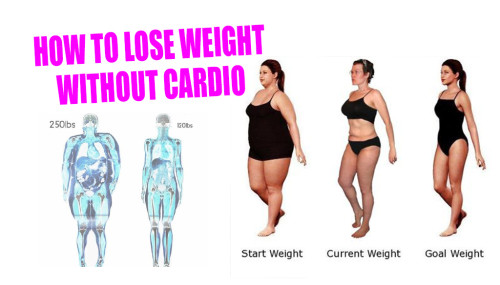Being overweight increases your chances of developing heart disease, arthritis, breathing complications, type two diabetes and other chronic health problems. Now as we all know, doing at least 30 minutes of cardiovascular activity five days a week will help you lose weight but it is not the only way to drop pounds. By controlling calorie intake and the type of fats you eat can significantly help you shed pounds.
Cardiovascular exercise, also known as aerobic exercise, uses large muscles and many muscle groups. To maintain and lose weight, it is recommended to do cardio activity, such as running or swimming, for 30 minutes a day, five days a week. While cardio exercise can help you burn a lot of calories, it does have some disadvantages. It can take a long time to lose weight this way and after a long period of time doing the same exercise regimen, it’s easy to grow bored and abandon your weight-loss efforts. Certain types of cardio, such as running and some sports, put tension on the joints, which is especially pertains to people who are over the age of 40, because they are at higher risk of developing joint diseases like arthritis.
Exercise is an important part of a weight loss regimen because it can burn off excess calories that you cannot eliminate through diet alone. People who are successful at losing weight and keep it off typically engage in regular physical activity. Resistance training, also known as anaerobic exercise, refers to any type of activity that does not require increased oxygen intake, such as weight lifting. It is suggested doing eight to 10 strength-training exercises, such as pushups, pull-ups, squats and plate-loaded machines, at least twice a week. You should do eight to 12 repetitions for each exercise. A 160-pound person can burn 219 calories in 60 minutes of weight lifting. A 200-pound person can burn 273 calories.
To lose weight an individual needs to take in fewer calories than he uses. The American Heart Association suggests that healthy females consume 1,600 to 2,400 calories a day depending on age and activity level. Males should consume 2,000 to 3,000 calories a day. People who get less physical activity need to consume fewer calories than those who exercise often. Also as you age, you require fewer calories.
Saturated fats and trans fats can add a significant number of calories to your diet and make it difficult to reduce the size of your waistline. Healthy adults should limit fat intake to less than 30 percent of total calories. People on a 2,200- to 2,500-calorie diet should consume fewer than 80 to 90 g of fat daily. Those on a 1,800- to 2,000-calorie diet should eat fewer than 60 to 70 g and those who eat 1,200 to 1,500 need less than 40 to 50 g of fat. Just to give you an idea of what this looks like, one slice of pizza has about 9 g of fat. A fast food cheeseburger can have 45 g of fat. Trans fats, which are found in fried foods and packaged baked goods including cookies and crackers, have no nutritional value at all and are very high in calories.
Eliminating these fats from your diet could radically reduce your calorie intake.
So, if you loath cardio or just get bored easily with a cardio routine, spice things up with weight training to help lose weight. Make sure you are consuming the correct amount of calories for your age and exercise level. Also make sure to stay away from the bad fats because in the end that’s what your goal is… to get rid of the fat!!!



Post your comment